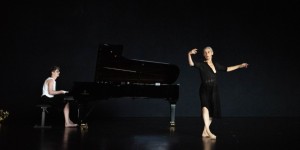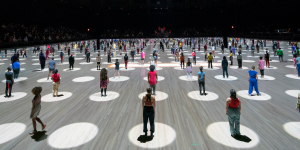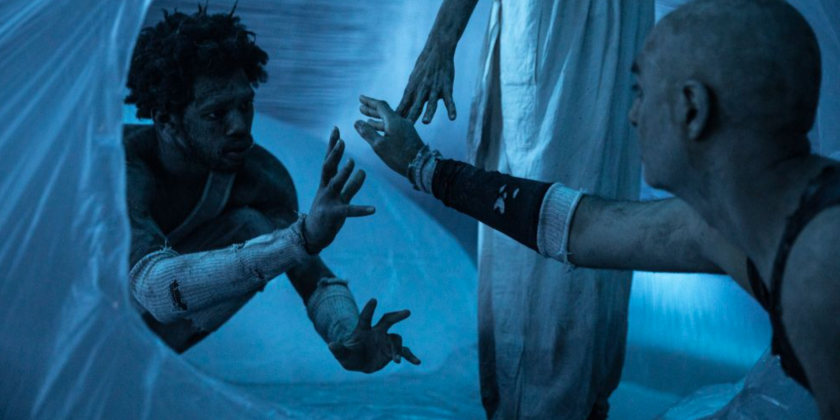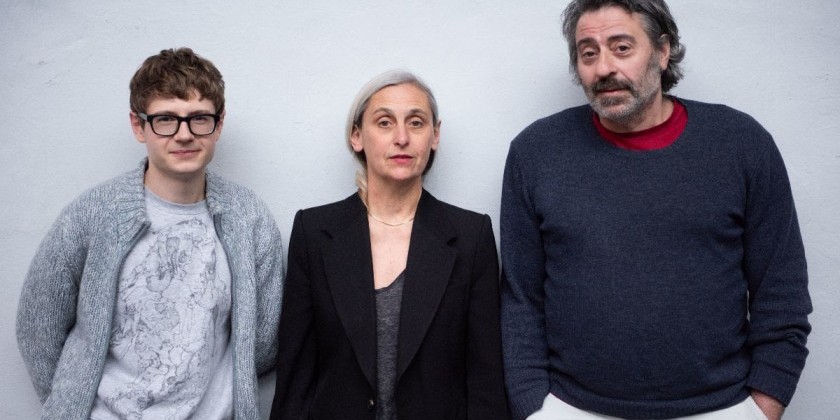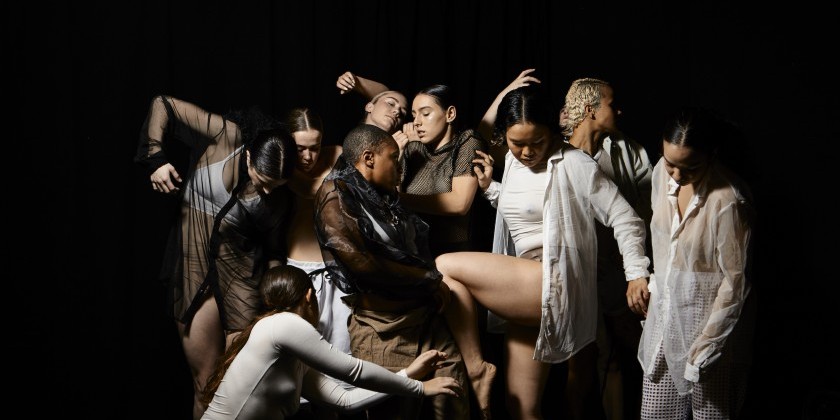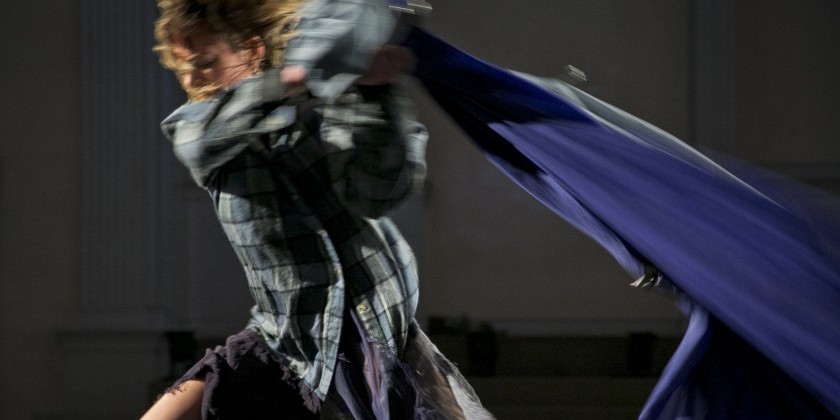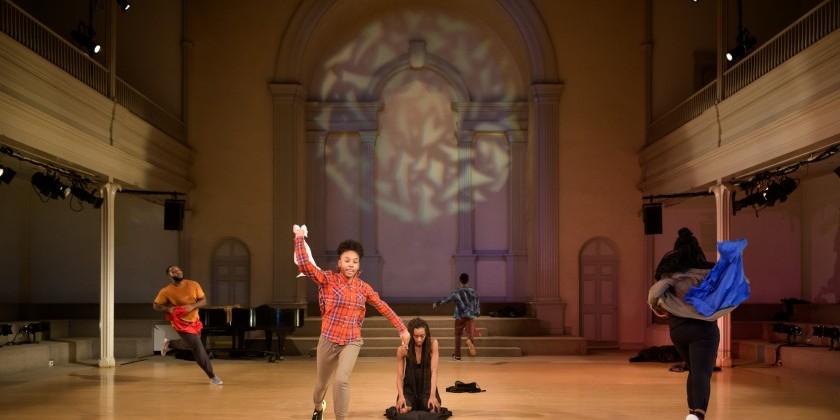IMPRESSIONS: Rosas in Anne Teresa De Keersmaeker’s “The Six Brandenburg Concertos” at the Park Avenue Armory with B'Rock
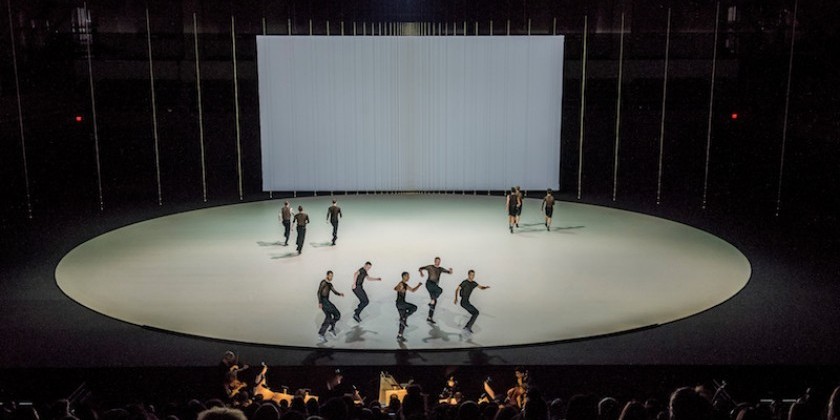
October 6, 2018
Choreography: Anne Teresa De Keersmaeker
Score: J.S. Bach, Brandenburg Concertos, BWV 1046-1051
Musicians: B'Rock Orchestra / Dancers: Rosas
Anne Teresa De Keersmaeker enjoys deconstructing intricate pieces of music — often storied ones — through dance, examining them like an archeologist. She leaves no counterpoint or melody unturned. This allows the viewer, especially those who aren’t musically trained, to see and hear the various complexities with crystal clarity. Her North American premiere of The Six Brandenburg Concertos is no different.
Heightened by the grandiosity of the Park Avenue Armory Drill Hall and the 23-person music ensemble, the B’Rock Orchestra, 16 Rosas dancers, attired in black dressy attire, walk in a simple pattern. A smirk here, a hip jut there, a jaunty ball-change — and see-through mesh shirts — indicates this formal walk is on the precipice of bubbling into chaos. Even a dog makes a surprise appearance.
With De Keersmaeker, the music isn’t merely the wagon to which the dancers hitch their actions. Rather, it’s an in-depth conversation. Each movement within each concerto varies the cast size. And, usually, the number of dancers correlates with the number of instruments the section includes. Though, in these instances, when the mover embodies the sound of their counterpart, they do more than transpose the notes and speed. De Keersmaeker is delightfully unpredictable when it comes to translating the music.
In the fourth concerto, for example, veteran dancer Boštjan Antončič expresses the lead violin. He follows the player with a studied gaze; his eyes meet hers through dives to the floor and deep bends in first position. As the instrument trills, he rolls on the ground in time to its frenzy.
Cynthia Loemij’s interpretation, in contrast, is softer, more internalized. She acknowledges her musician by sight at times, but more often, she feels their presence in her sinew. She faces upstage, her back practically singing, as a long, steady note rings out. In another instance, while Andreas Küppers furiously scales the harpsichord, Thomas Vantuycom instead arcs into a slow, luxurious backbend, augmenting the virtuosic playing.
More than music guides this two-hour work. De Keersmaeker employs her other fixation, geometry, throughout. Dancers walk and run with thrilling speed along the circular stage’s edge. Soloists wedge themselves on the diagonal between a group who hops and leaps in lines up and down the stage. The recurring walking patterns are split amongst small assemblies who dodge and cross one another as if they’re in a game of Tetris.
Rosas in Anne Teresa De Keersmaeker's The Six Brandenburg Concertos at Park Avenue Armory. Photo: Stephanie Berger
Even with all the plotted precision, De Keersmaeker leaves much room for individuality. The inclusion of three generations of Rosas helps illustrate the cast’s singularity. Loemij who has danced with the company since the 1990s, approaches the vocabulary like an artist with a fine-tipped brush, while Frank Gizycki, who graduated from its school in 2016, is less subtle — more Pollock-esque in his execution as he careens down the vast stage.
The choreographer also creates space for moments of play and levity. Igor Shyshko is especially magnetic. Like a kid on the playground, he grins and paws his feet in the air like a cartoon cat. Later, when the opening walking patterns returns, he winks at disco with a quick hip shift and finger point. Even the reserved Loemij does an exaggerated tiptoe walk, her eyes wide and maniacal. These captivating moments bring The Six Brandenburg Concertos and its players down from the heavens and into the laps of us mere mortals. The gesture is warmly welcomed.
The Dance Enthusiast Shares IMPRESSIONS/ our brand of review and Creates Conversation.
For more IMPRESSIONS, click here.
Share your #AudienceReview of performances for a chance to win a prize.






